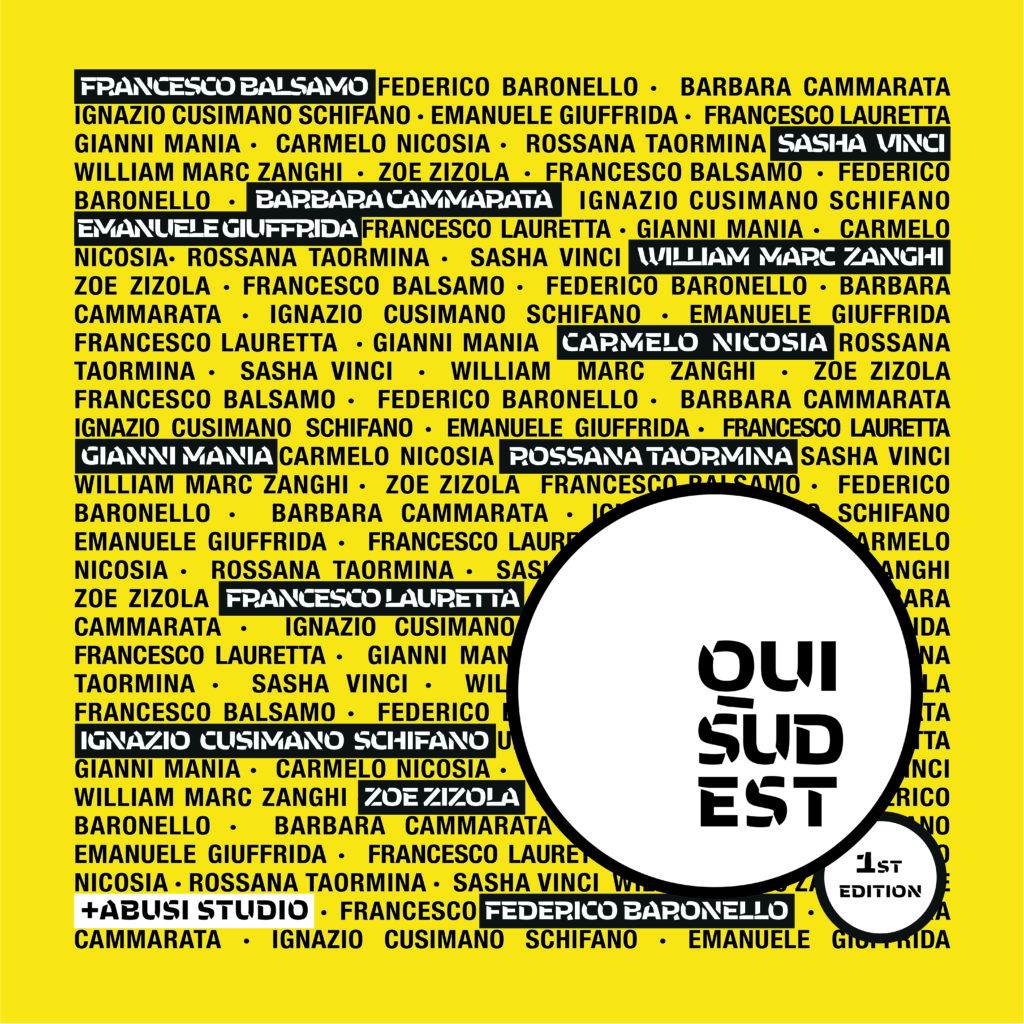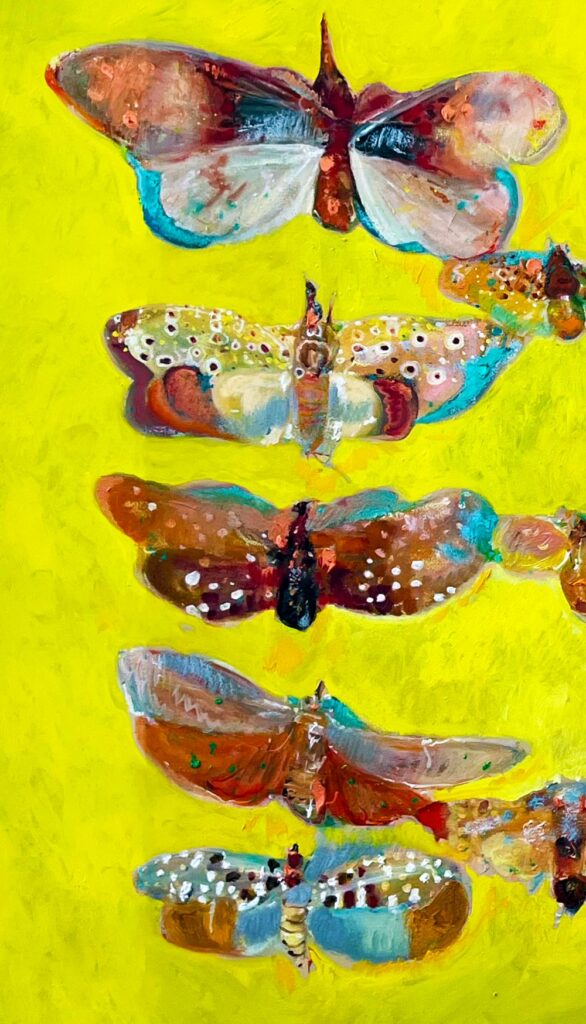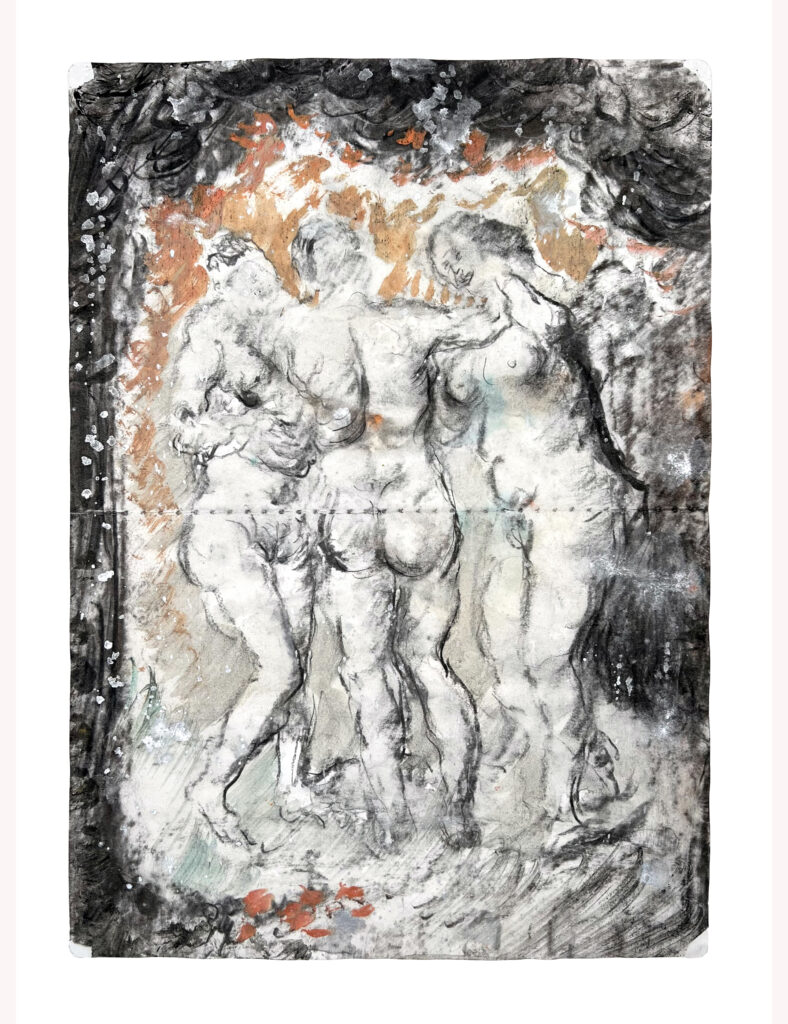
Disegni del Mattino I
2021
Inchiostro, olio e fusaggine su carta, 41.5 x 30 cm
Inventa, sperimenta e osa in maniera libera.
He Invents, experiments and dares freely
Le Farfalle di Breton
2021
olio su tela, 100 x 150 cm
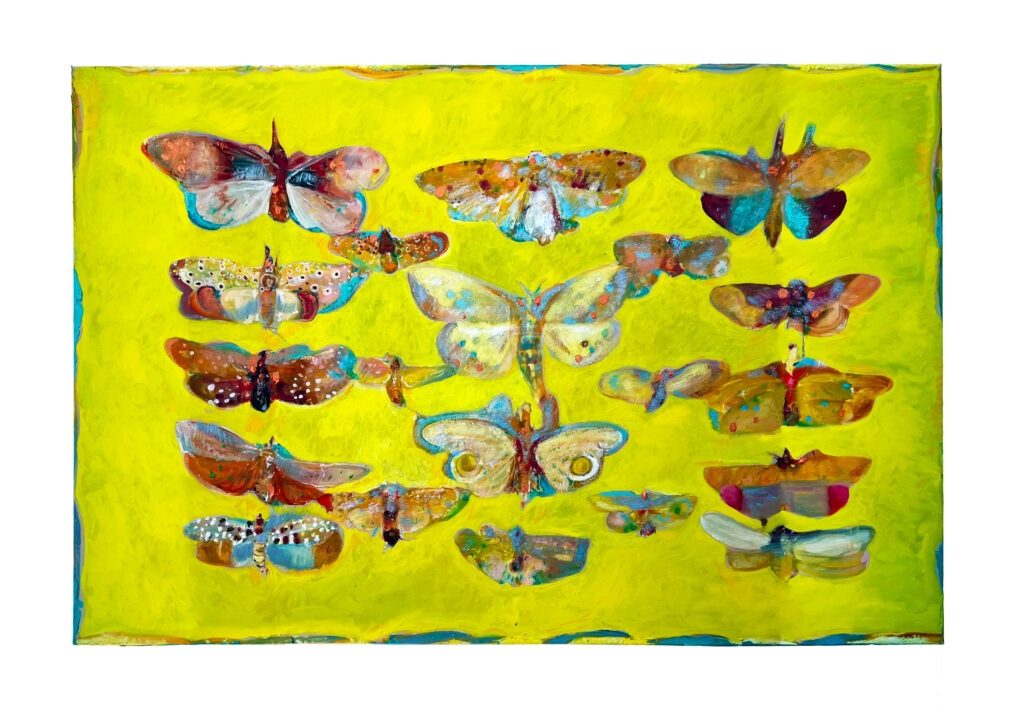
André Robert Breton (Tinchebray, 19 febbraio 1896 – Parigi, 28 settembre 1966) è stato un poeta, saggista e critico d’arte francese. Noto come poeta e teorico del surrealismo, che favorì con la stesura dei manifesti e curando riviste, mostre e incontri, fu allievo del filosofo André Cresson.
André Robert Breton (Tinchebray, 19 February 1896 – Paris, 28 September 1966) was a French poet, essayist and art critic. Known as a poet and theorist of Surrealism, which he encouraged by writing manifestos and curating magazines, exhibitions and meetings, he was a student of the philosopher André Cresson.
IT
Dal “Manifesto del surrealismo” (1924):
“Surrealismo, s.m. Automatismo psichico puro per mezzo del quale ci si propone di esprimere, o verbalmente, o per iscritto, o in qualsiasi altro modo, il funzionamento reale del pensiero. Dettato del pensiero, in assenza d’ogni controllo esercitato dalla ragione, al di fuori d’ogni preoccupazione estetica o morale.”
“Il surrealismo si fonda sull’idea di un grado di realtà superiore connesso a certe forme di associazione finora trascurate, sull’onnipotenza del sogno, sul gioco disinteressato del pensiero. Tende a liquidare definitivamente tutti gli altri meccanismi psichici e a sostituirsi ad essi nella risoluzione dei principali problemi della vita.”
EN
“Surrealism, s.m. Pure psychic automatism through which one aims to express, either verbally, or in writing, or in any other way, the real functioning of thought. Dictation of thought, in the absence of any control exercised by reason, outside of any aesthetic or moral concern.”
“Surrealism is based on the idea of a higher degree of reality connected to certain forms of association neglected until now, on the omnipotence of the dream, on the disinterested play of thought. It tends to definitively liquidate all other psychic mechanisms and to replace them in the resolution of the main problems of life.”
IT
“Fatevi portare di che scrivere, dopo esservi sistemato nel luogo che vi sembra più favorevole alla concentrazione del vostro spirito in sé stesso. Ponetevi nello stato più passivo, o ricettivo, che potete […] Scrivete rapidamente senza un soggetto prestabilito, tanto in fretta da non trattenervi, da non avere la tentazione di rileggere. La prima frase verrà da sola.”
“Ecco dei personaggi dai modi un po’ disparati […] Così provvisti di un piccolo numero di caratteristiche fisiche e morali, quegli esseri che in verità vi devono tanto poco non si scosteranno più da una certa linea di condotta, della quale non dovete occuparvi. Ne risulterà un intreccio più o meno sapiente in apparenza, a giustificare punto per punto un finale commovente o rassicurante di cui vi disinteressate”.
EN
“Have something brought to you to write after having settled in the place that seems most favorable to the concentration of your spirit in itself. Place yourself in the most passive, or receptive, state that you can […] Write quickly without a pre-established subject, so quickly so as not to hold you back, so as not to be tempted to reread. The first sentence will come by itself.”
“Here are characters with somewhat disparate ways […] Thus provided with a small number of physical and moral characteristics, those beings who in truth owe you so little will no longer deviate from a certain line of conduct, of which no you have to deal with it. The result will be a plot that is more or less clever in appearance, justifying point by point a moving or reassuring ending that you are not interested in.”
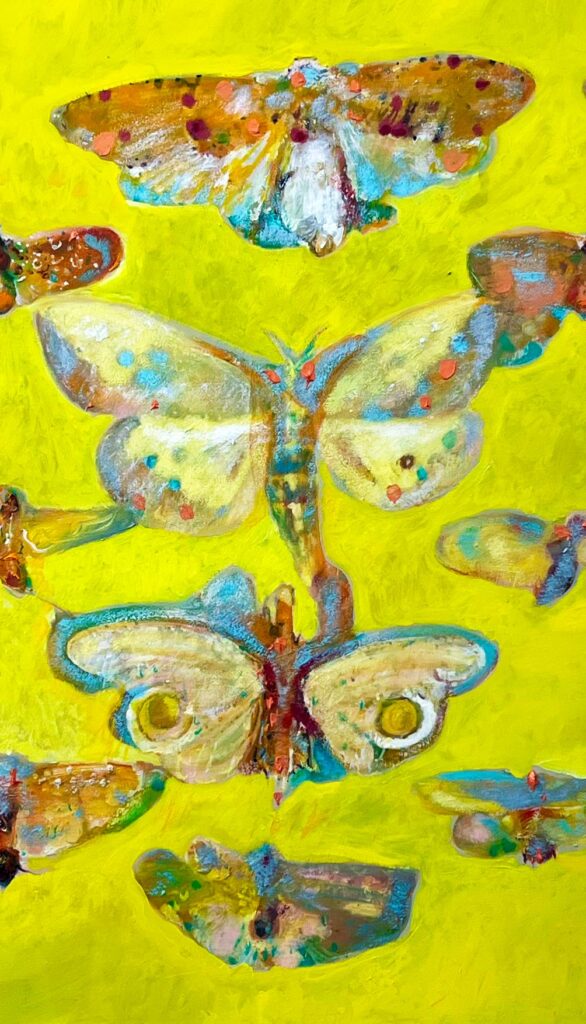
I DISEGNI DEL MATTINO
2021 Inchiostro, olio e fusaggine su carta, 41.5 x 30 cm
Serie I to IX
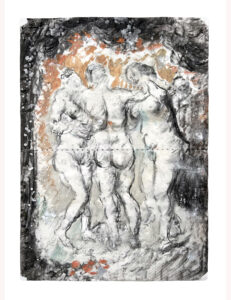
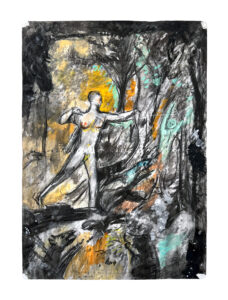
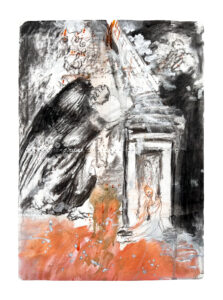
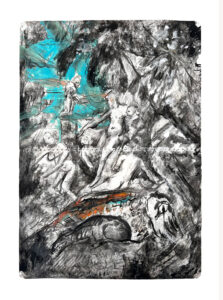
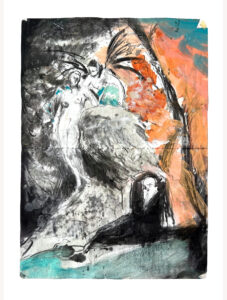
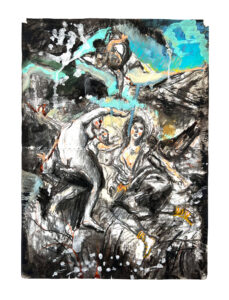
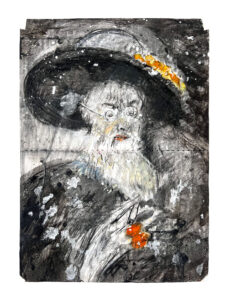
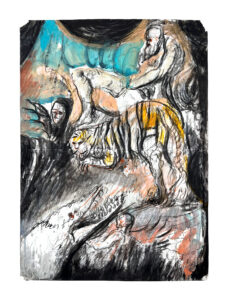
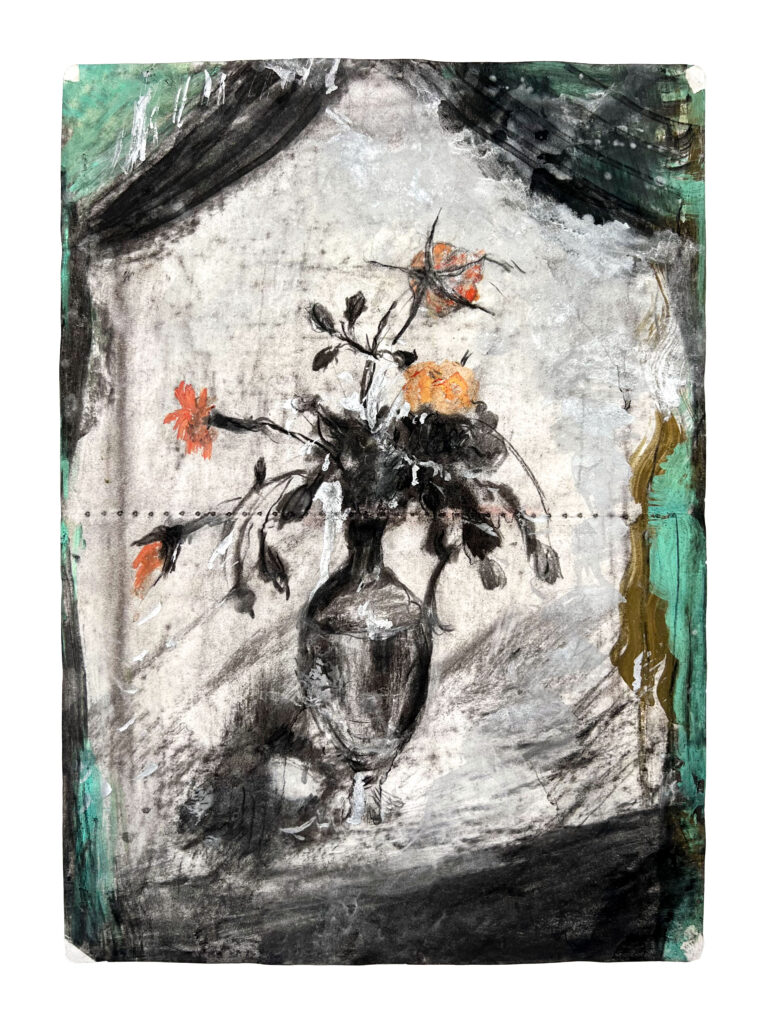
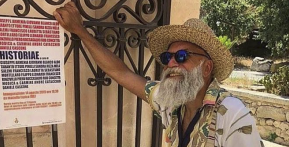
IT
Francesco Lauretta è nato a Ispica nel 1964. Vive e lavora Firenze.
La sua ricerca spazia dalla pittura, alle installazioni, alla performance. La pittura probabilmente è il medium più utilizzato, ma sarebbe un errore definirlo un pittore nel senso classico del termine. Egli infatti è più vicino a quel genere di artista degli anni novanta che mi piace definire come poeta, filosofo, sociologo, storico, o scienziato, capace di utilizzare il linguaggio dell’arte per investigare i principi che sono alla base della nostra esistenza, del nostro vivere quotidiano.
In quegli anni per altro Lauretta realizzava soprattutto opere installative, e si dedicava contemporaneamente allo studio della pittura. Una relazione difficile che risolve brillantemente solamente negli ultimi anni, riuscendo a bilanciare la sua straordinaria abilità nel disegno, la dipendenza per la storia della pittura, il rapporto tra lo spazio della pittura e il contesto di riferimento, la relazione tra la riconoscibilità e lo stile, con la necessità di interpretare il mondo visibile e invisibile piuttosto che tradurlo in un segno o in una materia.
Questo mini ciclo propone quattro versioni dedicate a San Gerolamo, dipinte con diversi stili, come se fossero riconducibili a differenti autori. In esse sembrano rivivere Odilon Redon, Fausto Pirandello, Cima da Conegliano, William de Kooning, osservandole è lecito immaginare l’intenzione di Lauretta che, parafrasando le parole del Santo ritratto allorché scrisse del suo modo di interpretare le Sacre Scritture, dice: … non rendo il segno con il segno, la materia con la materia, il colore con il colore, ma il senso con il senso …
«Io, infatti, non solo ammetto, ma proclamo liberamente che nel tradurre i testi greci, a parte le Sacre Scritture, dove anche l’ordine delle parole è un mistero, non rendo la parola con la parola, ma il senso con il senso”».
(Epistulae 57, 5, trad. R. Palla)
EN
Francesco Lauretta was born in Ispica in 1964. He lives and works in Florence.
His research ranges from painting to installations and performance. Painting is probably the medium he uses most, but it would be a mistake to define him as a painter in the classical sense of the term. In fact, he is closer to the kind of artist of the 1990s that I like to define as a poet, philosopher, sociologist, historian or scientist, capable of using the language of art to investigate the principles that underlie our existence and our daily lives.
In those years, Lauretta mainly produced installation works, while at the same time studying painting. It was a difficult relationship that he only brilliantly resolved in his later years, managing to balance his extraordinary skill in drawing, his dependence on the history of painting, the relationship between the space of the painting and its context, the relationship between recognisability and style, with the need to interpret the visible and invisible world rather than translate it into a sign or a material.
This mini-cycle proposes four versions dedicated to Saint Jerome, painted in different styles, as if they were attributable to different authors. Odilon Redon, Fausto Pirandello, Cima da Conegliano and William de Kooning seem to come to life in them, and observing them one can imagine Lauretta’s intention: paraphrasing the words of the portrayed saint when he wrote about his way of interpreting the Holy Scriptures, he says: … I do not render the sign with the sign, the material with the material, the colour with the colour, but the sense with the sense …
“I, in fact, not only admit, but freely proclaim that in translating Greek texts, apart from the Holy Scriptures, where even the order of words is a mystery, I do not render the word with the word, but the sense with the sense”.
(Epistulae 57, 5, transl. R. Palla)

